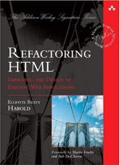I originally wrote the following as a sample chapter for a book proposal. Now that the right to blog anonymously seems to be under attack from some
unexpected quarters, I felt this might be a good time to put this out there.
Sometimes you can write more freely if you’re anonymous. You may want to talk about really personal and embarrassing things. You may want to talk about subjects that embarrass and upset governments with armed police or large corporations with lots of lawyers. Sometimes you just don’t want your employees to know their boss enjoys knitting tea cozies on the weekends. Sometimes you may not even care all that much about anonymity, but just want to establish different identities for different activities, much like novelists use pseudonyms when switching genres. It is absolutely possible to blog anonymously, and many people do it.
How much trouble it is depends on your security needs and paranoia level. A lot depends on what’s likely to happen if your anonymity is breached. For instance are you worried about being:
- Laughed at?
- Fired?
- Arrested?
Obviously if you think the CIA is going to be hunting you down, then you’ll take anonymity somewhat more seriously than if you’re merely worried your brother might make fun of your Ashlee Simpson fan site.
Read the rest of this entry »
This entry was posted
on Monday, April 9th, 2007 at 1:08 pm and is filed under Web Development.
You can follow any responses to this entry through the Atom feed.
Both comments and pings are currently closed.
Last night a few hundred assorted New York geeks packed into Google’s new Chelsea offices to hear Google engineer Luiz Barroso discuss “Watts, Faults, and Other Fascinating Dirty Words Computer Architects Can No Longer Afford to Ignore.” Capsule version: While CPU power has been increasing regularly, for the last fifteen years or so MIPs per watt may actually have been going down. At the very least, it has not been growing nearly as fast as total processing power per server. The good news is that since we haven’t really bothered to optimize our computers for energy efficiency there’s still a lot of low-hanging fruit left to pick off in this space.
Read the rest of this entry »
This entry was posted
on Friday, April 6th, 2007 at 7:59 am and is filed under Hardware.
You can follow any responses to this entry through the Atom feed.
You can make a comment or trackback from your own site.
Here’s a neat rearrangement of Matthew Levine’s Holy Grail CSS layout (fixed width left and right columns and liquid inner column) I’ve devised for Refactoring HTML. This is based on the non-equal height, no extra-div version. The basic idea is reorganizing the style rules into three sections:
- The rules whose values must be copied verbatim.
- The rules whose values can be set to arbitrary values.
- The rules whose values are calculated based on the arbitrary values.
This makes it easier to see exactly what you can change independently, and what else you have to update when you make such a change. Here’s a sample stylesheet. LC stands for left column, RC for right column, and CC for center column.
Read the rest of this entry »
This entry was posted
on Monday, April 2nd, 2007 at 12:31 pm and is filed under Refactoring HTML, Web Development.
You can follow any responses to this entry through the Atom feed.
You can make a comment or trackback from your own site.
